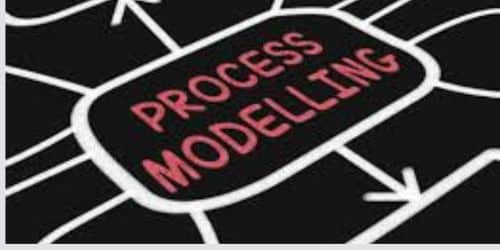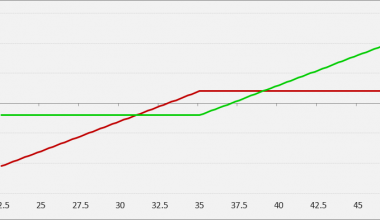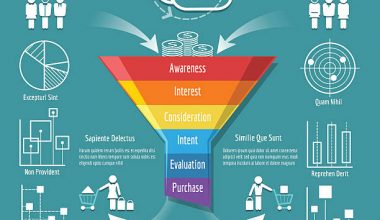Ever been to a business meeting where proposals are presented? You will notice the presentations are mostly done with charts and diagrams. Within an organization, most ideas and processes are presented in the form of diagrams and charts. Generally, it portrays a clear picture of what the process or idea is about at various stages. Business process modeling is the process of creating visual representations of the activities and steps involved in a business process. It is a way for organizations to analyze and improve their processes by providing a clear and detailed picture of how they work. In the course of this article, we will cover some of the various business process modeling techniques, software tools, and examples.
Understanding Business Process Modeling
Business process modeling typically involves creating diagrams that show the flow of activities, decision points, and handoffs between different departments or stakeholders. There are several different techniques and notations used in business process modeling, including flowcharts, swimlane diagrams, BPMN, and more.
The goal of business process modeling is to help organizations understand how their processes work, identify areas for improvement, and implement changes to increase efficiency, reduce costs, and improve customer satisfaction. It can also help organizations identify and mitigate risks and comply with regulatory requirements.
Once a business process model has been created, it can be used as a basis for process improvement initiatives, such as process redesign, automation, or optimization. It can also be used as a tool for communication and collaboration between different departments and stakeholders. Generally, business process modeling is a valuable tool for any organization that wants to understand and optimize its processes for maximum efficiency and effectiveness.
What Are the Four Phases Of Business Process Modeling?
The four phases of business process modeling are discovery, analysis, design, and implementation. Let’s see each of these below;
#1. Discovery
In this phase, the business process modeler identifies and understands the current process by gathering information from various sources such as interviews, documentation, and observations. The main objective is to document the process in detail and identify its strengths, weaknesses, opportunities, and threats.
#2. Analysis
In this phase, the business process modeler analyzes the information gathered in the discovery phase to identify areas for improvement. Generally, the main objective is to identify and document the problem areas, inefficiencies, and bottlenecks in the current process.
#3. Design
In this phase, the business process modeler designs a new process that addresses the issues identified in the analysis phase. The main objective is to develop a new process that is more efficient, effective, and meets the business requirements.
#4. Implementation
In this phase, the business process modeler implements the new process, which involves training the employees, documenting the new process, and monitoring its effectiveness. The main objective is to ensure that the new process is successful and achieves the desired results.
What Is Business Process Modelling in Project Management?
Business process modeling in project management involves creating visual representations of the processes involved in a project. It is a technique used to improve project management by identifying inefficiencies and opportunities for improvement in the project processes.
The process of business process modeling in project management typically involves the following steps:
#1. Identifying the Project Processes
This involves determining the key processes involved in the project and defining their boundaries.
#2. Mapping the Processes
This involves creating a visual representation of the project’s processes using diagrams or flowcharts. This step helps identify the sequence of activities involved in each process and their relationships to one another.
#2. Analyzing the Processes
This involves reviewing the mapped processes to identify inefficiencies or bottlenecks that could impact project performance. This step helps identify opportunities for improvement and optimization of the project processes.
#3. Designing Improvements
This involves identifying changes to the project processes that could improve performance and creating a new model that incorporates these changes.
#4. Implementing the New Model
This involves implementing the new model by training project team members and stakeholders on the updated processes and monitoring the impact of the changes.
What Are the 5 Steps of BPM?
The five steps of BPM are
- Design
- Modeling
- Execution
- Monitoring
- Optimization
What is the BPM Lifecycle?
The BPM (Business Process Management) lifecycle is a framework that outlines the various stages involved in managing and optimizing business processes.
BPM Lifecycle
The BPM (Business Process Management) lifecycle is a framework that outlines the various stages involved in managing and optimizing business processes. By following the BPM lifecycle, organizations can continuously improve their processes, increase efficiency, reduce costs, and achieve their strategic goals and objectives.
The BPM lifecycle typically consists of the following stages:
#1. Process Identification
In this stage, the process is identified, defined, and documented. This involves identifying the process and its boundaries, understanding its objectives and requirements, and documenting it in a process model or flowchart.
#2. Process Discovery
In this stage, the process is analyzed to identify opportunities for improvement. This involves examining the process model or flowchart to identify inefficiencies, bottlenecks, and other areas for improvement.
#3. Process Analysis
In this stage, the process is analyzed in detail to understand its performance and identify opportunities for optimization. This involves using tools such as process simulations, data analysis, and stakeholder interviews to gain insight into the process.
#4. Process Redesign
In this stage, the process is redesigned or improved to address the issues identified in the analysis stage. This involves making changes to the process model or flowchart to optimize the operation and achieve the desired outcomes.
#5. Process Implementation
In this stage, the redesigned process is implemented in the organization’s operations. This involves training employees on the new process, providing support during the transition, and monitoring the performance of the process.
#6. Process Monitoring
In this stage, the performance of the process is monitored to ensure that it is meeting its objectives. This involves monitoring process metrics, identifying any issues or problems, and taking corrective actions if necessary.
#7. Process Optimization
In this stage, the process is continuously optimized to achieve better performance and efficiency. This involves identifying opportunities for improvement, making changes to the process model or flowchart, and implementing the changes.
What Are the 6 Principles of Modelling?
There are various principles of modeling that can be applied to different types of modeling, including business process modeling, data modeling, and system modeling. They are abstraction, decomposition, composition, formality, traceability, as well as verification, and validation,
What are the 7 Steps Of the Business Process?
The steps of a business process can vary depending on the specific process being analyzed or modeled, but the following are the seven general steps that are commonly used:
- Define the process:
- Map the process
- Analyze the process
- Design the improved process
- Implement the new process
- Monitor the process
- Optimize the process
Business Process Modeling Course
There are many online courses available for business process modeling that cover a variety of topics and levels of expertise. You can find courses on platforms such as Udemy, Coursera, and LinkedIn Learning, or seek out training from professional organizations such as the Association for Business Process Management Professionals (ABPMP). The following are some of the popular business process modeling courses available:
#1. Business Process Modeling Fundamentals
The first course on our list of business, process modeling courses is business process modeling fundamentals. This course covers the basics of business process modeling, including techniques for modeling processes using diagrams and flowcharts. It also includes practical exercises and case studies to help you apply what you’ve learned.
#2. Advanced Business Process Modeling
The next course that we will consider on the list of business process modeling courses is advanced business process modeling. If you already have some experience with process modeling, this course can help you take your skills to the next level. It covers more complex modeling techniques, such as process decomposition and simulation, and provides opportunities to work on real-world projects.
#3. BPMN (Business Process Model and Notation) Certification Training
BPMN is yet another course we need to consider when talking about business process modeling courses. widely used standard for process modeling and this course is designed to help you master it. It covers the basics of BPMN notation and syntax, as well as advanced modeling techniques.
#4. Lean Six Sigma Green Belt Training
Our list of business process modeling courses will not be complete without Lean Six Sigma green belt training. This course focuses on process improvement and optimization using the Lean Six Sigma methodology. It covers various topics, including process mapping, statistical analysis, as well as project management.
#5. Process Mining
The last course on our list of business process modeling courses is process mining. This course covers the emerging field of process mining, which uses data from information systems to analyze and improve business processes. It covers topics such as data extraction, process discovery, and process improvement.
Business Process Modelling Techniques
There are several business process modeling techniques that organizations can use to analyze and optimize their processes. The choice of technique will depend on the specific goals and challenges of the organization. Here are some of the most common techniques:
#1. Flowcharts
Flowcharts are diagrams that represent a process using shapes and symbols to indicate the various steps involved. They can help to visualize the flow of activities and identify potential bottlenecks or inefficiencies in a process.
#2. Swimlane Diagrams
Swimlane diagrams are a type of flowchart that organizes the process steps into lanes to represent different departments or stakeholders. This can help clarify responsibilities and handoffs between different groups.
#3. Value Stream Mapping
Value stream mapping is a technique that looks at the flow of materials and information through a process to identify waste and inefficiencies. It can help organizations streamline their processes and reduce costs.
#4. Business Process Modeling Notation (BPMN)
BPMN is a standardized notation for process modeling that uses a set of symbols and notation to represent process steps, decision points, and other elements. It provides a common language for process modeling that can be used across different organizations and industries.
#5. Business Process Reengineering (BPR)
BPR is a technique that involves fundamentally redesigning a process to improve its efficiency and effectiveness. It may involve eliminating unnecessary steps, automating certain activities, or restructuring the organization to better support the process.
#6. Six Sigma
Six Sigma is a methodology that uses statistical analysis and process improvement techniques to reduce defects and variation in a process. It can help organizations achieve higher levels of quality and customer satisfaction.
Business Process Modeling Tools
There are many business process modeling tools available that can help organizations create and manage process models. The choice of tool will depend on the specific needs and budget of the organization, as well as the level of expertise of the users. Here are some popular tools:
#1. Microsoft Visio
The first on our list of business process modeling tools is Microsoft Visio. Visio is a popular diagramming tool that includes a range of templates and shapes for creating flowcharts, swimlane diagrams, and other process models. It integrates with other Microsoft products, such as SharePoint and Microsoft Teams.
#2. Lucidchart
Lucidchart is a cloud-based diagramming tool that includes templates and shapes for process modeling. It allows for collaboration and the sharing of diagrams with team members and stakeholders.
#3. Bizagi
Bizagi is a business process management suite that includes a process modeling tool, as well as capabilities for process automation and analysis. It includes pre-built templates and integrates with other enterprise software, such as Salesforce and SharePoint.
Signavio is a cloud-based business process management platform that includes a process modeling tool as well as capabilities for process automation, collaboration, and analysis. It supports BPMN notation and includes pre-built templates.
#5. IBM Blueworks Live
Blueworks Live is a cloud-based business process management platform that includes a process modeling tool as well as capabilities for process automation and collaboration. It supports BPMN notation and includes pre-built templates.
#6. ARIS
ARIS is a business process modeling and analysis tool that is designed for enterprise-level modeling. It includes a range of modeling techniques and supports a variety of notations, including BPMN and EPC.
Business Process Modelling Examples
Here are some examples of business process modeling that organizations may use to analyze and optimize their processes:
#1. Order-to-Cash Process
This process includes all the steps involved in fulfilling a customer order, from order entry to payment collection. By modeling this process, organizations can identify areas of inefficiency or bottlenecks and make improvements to reduce cycle times and increase customer satisfaction.
#2. Procure-to-Pay Process
This process includes all the steps involved in purchasing goods or services, from requisition to payment. By modeling this process, organizations can identify opportunities to streamline purchasing and reduce costs, such as consolidating suppliers or optimizing inventory levels.
#3. Customer Onboarding Process
This process includes all the steps involved in bringing new customers on board, such as account setup, product configuration, and training. By modeling this process, organizations can identify areas where customer satisfaction can be improved, such as reducing the time to complete the onboarding process or providing better training resources.
#4. Hiring Process
This process includes all the steps involved in recruiting and hiring new employees, from job posting to onboarding. By modeling this process, organizations can identify areas where the hiring process can be streamlined, such as reducing the time to fill open positions or improving the candidate experience.
#5. Incident Management Process
This process includes all the steps involved in responding to incidents such as IT system failures or security breaches. By modeling this process, organizations can identify areas where the incident response can be improved, such as reducing the time to detect and respond to incidents or enhancing communication between response teams.
Related Articles
- PROCESS MANAGEMENT TOOLS: Meaning, Free, and Best Process Management Tools
- Project Quality Management Planning Guide (Tools & Software)
- BUSINESS PROCESS MANAGEMENT (BPM): Definition & Step-By-Step Guide
- DATA MODELING: Definition, Types and Techniques
- BUSINESS PROCESS MAPPING TOOLS: Uses, Free Tools & Guide
- BUSINESS PROCESS MODELING: Definition, Top Software, Course & Certification






